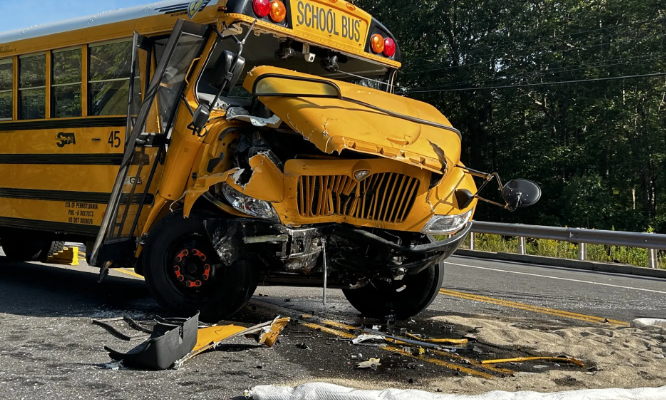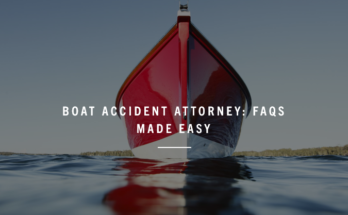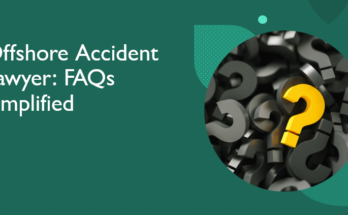When you or a loved one have been involved in a bus accident, the aftermath can be overwhelming. Medical bills, lost wages, and the emotional trauma can take a significant toll. That’s where experienced bus accident attorneys come in – they are your dedicated advocates, fighting to ensure you receive the compensation you deserve.
These legal professionals understand the complexities of bus accident cases. They know how to navigate the intricate web of insurance companies, government regulations, and liability issues to build a strong case on your behalf.
What are Bus Accidents?
Bus accidents refer to incidents involving buses that result in damage, injury, or fatalities. These accidents can involve various types of buses, including public transportation buses, school buses, private charter buses, and intercity or interstate buses.
Types of Buses Involved in Accidents
According to recent studies, over 15,000 bus accidents occur annually in the U.S– approximately 47% of these accidents lead to injuries, and 1.5% of them are fatal. The following are the types of buses involved in accidents in the U.S
- Public Transportation Buses: Operated by government entities or private companies, serving urban and suburban areas.
- School Buses: Transporting students to and from school and school-related activities.
- Private Charter Buses: Rented by groups for specific trips or events.
- Intercity and Interstate Buses: Long-distance buses operating between cities and states.
Categories of Bus Accidents
It’s crucial to understand the different categories of bus accidents that can occur. From rollover accidents to collisions with other vehicles, the potential for harm is significant. Regardless of the category of bus accident, the impact on passengers, other drivers, and pedestrians can be devastating.
- Rollover accidents: This for instance, can happen when a bus driver loses control of the vehicle, leading to the bus tipping over onto its side or even completely flipping over. These categories of accidents are often caused by excessive speed, sharp turns, or even mechanical failures.
- Head-on collisions: where a bus collides with another vehicle coming from the opposite direction. It can also be catastrophic. These accidents can result in severe injuries and even fatalities due to the immense force involved.
- Rear-end collisions: where a bus is struck from behind by another vehicle, can also have serious consequences. These accidents can be caused by distracted or inattentive drivers, as well as sudden stops or lane changes.
- Pedestrian and cyclist accidents involving buses: where a bus collides with a pedestrian or cyclist. These categories are also a significant concern, as the size and weight of these vehicles can cause severe harm to vulnerable road users.
- Intersection accidents: where a bus collides with another vehicle or a pedestrian while turning or crossing an intersection, are also common and can have devastating consequences.
Causes of Bus Accidents
Bus accidents can be caused by a variety of factors, often involving a combination of driver error, mechanical issues, environmental conditions, and other road users. Understanding these causes is crucial for preventing accidents and for claiming compensation when bus accidents happen.
1. Driver Negligence and Error
Distracted Driving
- Using Mobile Phones: Texting, calling, or using apps while driving.
- Eating or Drinking: Consuming food or beverages, which takes the driver’s focus off the road.
- Passenger Interaction: Engaging in conversations with passengers, which can divert attention.
Fatigue and Drowsy Driving
- Long Hours: Extended driving hours without adequate breaks, often due to tight schedules.
- Sleep Deprivation: Insufficient rest leading to decreased alertness and slower reaction times.
Speeding and Reckless Driving
- Exceeding Speed Limits: Driving faster than posted speed limits, especially in urban areas and school zones.
- Aggressive Maneuvering: Rapid lane changes, tailgating, and failure to yield.
Driving Under the Influence
- Alcohol: Impaired judgment and reduced reaction times due to alcohol consumption.
- Drugs: Both illegal substances and prescription medications that affect the driver’s ability to operate the vehicle safely.
Inadequate Training
- Lack of Experience: Drivers without sufficient training or experience handling large vehicles.
- Poor Knowledge: Insufficient understanding of safety protocols and emergency procedures.
2. Mechanical Failures and Maintenance Issues
Brake Failures
- Worn-out Brake Pads: Lack of regular maintenance leading to worn-out brake components.
- Hydraulic Issues: Problems with the brake fluid system that affect braking performance.
Tire Blowouts
- Underinflation or Overinflation: Incorrect tire pressure leading to increased risk of blowouts.
- Worn Tires: Tires that have exceeded their lifespan or are damaged.
Engine and Transmission Problems
- Overheating: Issues with the cooling system leading to engine failure.
- Transmission Failures: Problems with shifting gears, which can lead to loss of control.
Regular Maintenance Neglect
- Inadequate Inspections: Skipping scheduled maintenance checks and necessary repairs.
- Delayed Repairs: Postponing essential fixes due to cost-saving measures or oversight.
3. Poor Road Conditions
Potholes and Uneven Surfaces
- Damaged Roads: Potholes, cracks, and other road surface issues that can cause accidents.
Inadequate Signage and Road Markings
- Missing Signs: Absence of essential road signs such as speed limits, stops, and yield signs.
- Faded Markings: Poorly visible road markings that confuse drivers.
Poor Lighting
- Inadequate Streetlights: Insufficient lighting in areas leading to reduced visibility.
- Non-functional Traffic Lights: Broken or malfunctioning traffic signals that cause confusion.
4. Weather Conditions
Heavy Rain and Flooding
- Slippery Roads: Wet surfaces reducing traction and increasing stopping distances.
- Hydroplaning: Loss of vehicle control due to water buildup on the road.
Snow and Ice
- Icy Roads: Increased risk of skidding and difficulty in stopping the bus.
- Snow Accumulation: Obstructing visibility and making roads impassable.
Fog and Reduced Visibility
- Thick Fog: Severely limiting driver’s visibility and increasing the risk of collisions.
- Dust Storms: Similar effects as fog, with added risk of respiratory issues for drivers and passengers.
5. Pedestrian and Other Vehicle Errors
Pedestrians
- Jaywalking: Crossing the road unexpectedly or at non-designated areas.
- Inattentiveness: Pedestrians distracted by mobile devices or other activities.
Other Motorists
- Erratic Driving: Sudden lane changes, speeding, or reckless driving around buses.
- Failure to Yield: Not giving buses the right of way, especially in merging lanes or intersections.
Cyclists and Motorcyclists
- Dangerous Maneuvering: Riding too close to buses or weaving through traffic.
- Visibility Issues: Difficulty in seeing and being seen by bus drivers, especially in blind spots.
Steps to Take After a Bus Accident
Taking the right steps after a bus accident is crucial for your safety and for ensuring that your legal rights are protected. By following these steps, you can help secure necessary medical treatment, preserve vital evidence, and navigate the legal processes involved in seeking compensation for your injuries and losses. The following are crucial steps to take after a bus accident:
1. Ensure Safety and Seek Medical Attention
Check for Injuries
- Self-Assessment: Check yourself for any injuries, no matter how minor they may seem.
- Help Others: If you can, assist other passengers who might be injured.
Move to Safety
- Exit the Bus: If it’s safe to do so, exit the bus to avoid potential hazards like fire or further collisions.
- Find a Safe Spot: Move to a safe location away from the road and traffic.
Call Emergency Services
- Dial 911: Report the accident to emergency services immediately.
- Provide Details: Give clear and concise information about the location, the number of injured individuals, and the nature of their injuries.
Seek Medical Help
- Immediate Attention: Allow paramedics to examine you and others at the scene, even if you think you are not injured.
- Follow-Up: Visit a doctor for a comprehensive medical check-up after the accident to identify any latent injuries.
2. Report the Accident
Inform Authorities
- Police Report: Ensure the police are called to the scene and a report is filed. This will be a crucial piece of evidence later.
- Bus Company: Notify the bus company or operator about the accident if they are not already aware.
Get Contact Information
- Driver and Company: Obtain the name, contact details, and insurance information of the bus driver and the bus company.
- Witnesses: Collect names, phone numbers, and addresses of any witnesses who saw the accident.
3. Document the Scene
Take Photographs
- Accident Scene: Photograph the entire accident scene, including the bus, other vehicles involved, and any visible injuries.
- Details: Capture details like road conditions, traffic signs, skid marks, and any property damage.
Write Notes
- Details of the Accident: Jot down your recollection of the accident, including the time, date, location, and the sequence of events.
- Conditions: Note any relevant conditions such as weather, lighting, and traffic at the time of the accident.
4. Preserve Evidence
Collect Information
- Insurance Details: Gather insurance information from the bus driver and any other drivers involved.
- Bus and Driver Info: Record the bus’s license plate number, the driver’s name, and their driver’s license number.
Secure Personal Belongings
- Lost Items: Make a note of any personal belongings that were damaged or lost in the accident.
- Valuables: Retrieve your valuables if it is safe to do so.
5. Contact an Attorney
Seek Legal Advice
- Bus Accident Attorney: Contact an attorney who specializes in bus accidents to understand your legal rights and options.
- Free Consultation: Many attorneys offer free consultations to discuss your case and provide initial guidance.
Avoid Statements
- Insurance Companies: Do not give any recorded statements or sign any documents from insurance companies without consulting your attorney first.
- Media: Refrain from speaking to the media or posting details about the accident on social media.
6. File a Claim
Insurance Claim
- Notify Insurers: Report the accident to your insurance company and the bus company’s insurance provider.
- Documentation: Provide all necessary documentation, including the police report, medical records, and evidence collected from the scene.
Legal Action
- Personal Injury Claim: With the help of your attorney, file a personal injury claim to seek compensation for medical expenses, lost wages, pain and suffering, and other damages.
- Property Damage: File claims for any property damage incurred during the accident.
The Unique Challenges of Bus Accident Cases
Bus accident cases present unique challenges that differentiate them from other types of motor vehicle accidents. These challenges stem from the complexity of determining liability, the number of potential victims, the involvement of multiple parties, and the regulatory landscape governing bus operations. Understanding these challenges is crucial for anyone involved in a bus accident, as it underscores the importance of having specialized legal representation. The following are some of the challenges of bus accident cases:
1. Complex Liability Issues
Multiple Defendants
- Bus Companies: Often, bus companies are liable for the actions of their drivers and for the maintenance of their vehicles. Determining the extent of the company’s liability can be complex, especially if the company employs independent contractors.
- Bus Drivers: The actions and potential negligence of the bus driver must be evaluated. This includes assessing whether the driver followed all safety protocols and regulations.
- Government Entities: Public transportation buses are often operated by government entities, which may have specific legal protections and limitations on liability. Suing a government entity involves navigating sovereign immunity laws and other procedural hurdles.
- Third Parties: Other vehicles, pedestrians, or cyclists may also share responsibility for the accident. Establishing the fault of multiple parties requires thorough investigation and evidence gathering.
2. Multiple Victims and High Stakes
Large Number of Victims
- Passenger Injuries: Bus accidents often involve multiple passengers, leading to numerous injury claims. Managing and representing the interests of many injured parties can complicate legal proceedings.
- Pedestrians and Other Motorists: In addition to passengers, bus accidents can affect pedestrians and occupants of other vehicles, increasing the number of potential claimants.
3. Severity of Injuries
- Serious Injuries: Due to the size and weight of buses, accidents tend to result in severe injuries, including traumatic brain injuries, spinal cord injuries, and fatalities. The high stakes involved in these cases necessitate meticulous legal representation.
- Emotional and Psychological Impact: Victims may suffer from significant emotional and psychological trauma, which needs to be adequately addressed in compensation claims.
4. Regulatory and Compliance Challenges
Federal and State Regulations
- Regulatory Compliance: Buses are subject to stringent federal and state regulations, including safety standards, driver qualifications, and maintenance requirements. Understanding and applying these regulations is essential for determining liability.
- Transportation Safety Board Investigations: Accidents involving buses may prompt investigations by bodies such as the National Transportation Safety Board (NTSB), adding a layer of complexity to the case.
5. Evidence Collection and Preservation
Accident Reconstruction
- Expert Testimony: Due to the complexity of bus accidents, expert testimony from accident reconstruction specialists is often required to determine the cause of the accident and establish fault.
- Data Collection: Buses may be equipped with black boxes, surveillance cameras, and GPS tracking devices. Analyzing this data can provide crucial evidence but requires technical expertise.
6. Witness Coordination
- Multiple Witnesses: Coordinating statements from numerous witnesses, including passengers, bystanders, and other drivers, is challenging but essential for building a robust case.
- Documentation and Preservation: Ensuring that all relevant evidence, such as maintenance records, driver logs, and surveillance footage, is preserved and collected promptly is critical for successful litigation.
7. Insurance and Compensation Issues
Multiple Insurance Policies
- Complex Insurance Claims: Bus companies, drivers, and other involved parties may have multiple insurance policies with different coverage limits and exclusions. Navigating these policies to secure fair compensation requires specialized knowledge.
- Disputes Over Coverage: Insurance companies may dispute claims based on policy terms, leading to prolonged legal battles.
8. Fair Compensation
- Calculating Damages: Accurately calculating damages for medical expenses, lost wages, pain and suffering, and other losses involves detailed documentation and expert evaluation.
- Long-Term Needs: Ensuring that compensation accounts for the long-term medical and rehabilitation needs of severely injured victims is vital for their future well-being.
How to Prove Negligence in a Bus Accident Case
Proving negligence in a bus accident case involves demonstrating that the bus driver or another responsible party failed to exercise reasonable care, directly causing the accident and resulting injuries. Here are the key elements and steps required to establish negligence in a bus accident case:
1. Duty of Care
The first element to prove is that the defendant owed a duty of care to the plaintiff. In a bus accident case, this typically involves showing that:
- Bus Drivers: Owe a duty of care to their passengers, other road users, and pedestrians to operate the vehicle safely.
- Bus Companies: Owe a duty of care to ensure that their buses are properly maintained and that their drivers are adequately trained and qualified.
2. Breach of Duty
The next part is showing that the defendant breached this duty of care. This can be shown by presenting evidence that the bus driver or company failed to act as a reasonably prudent person would under similar circumstances. Examples include:
- Driver’s Actions: Evidence of reckless driving, speeding, distracted driving, or driving under the influence.
- Company’s Negligence: Failure to perform regular maintenance, inadequate driver training, or ignoring safety regulations.
3. Causation
The third element involves proving that the breach of duty directly caused the accident and the resulting injuries. This requires establishing a nexus between the defendant’s actions and the harm suffered by the plaintiff. Two types of causation must be demonstrated:
- Actual Cause (Cause in Fact): Showing that the accident would not have occurred “but for” the defendant’s actions.
- Proximate Cause: Demonstrating that the defendant’s actions were a foreseeable cause of the accident and injuries.
4. Damages
The final element is proving that the plaintiff suffered actual damages as a result of the accident. This includes physical injuries, emotional distress, financial losses, and property damage. Evidence may include:
- Medical Records: Pictures or other documentation of injuries, treatments, and medical bills.
- Employment Records: Proof of lost wages and impact on earning capacity.
- Property Damage: Estimates and receipts for repairs or replacement of damaged property.
- Pain and Suffering: Testimonies, psychological evaluations, and other documentation of emotional and mental trauma.
Steps to Prove Negligence
1. Gather Evidence
Collecting comprehensive evidence is crucial to building a strong negligence case. This includes:
- Accident Reports: Obtain the official police report detailing the accident.
- Photographs and Videos: Capture the accident scene, vehicle damage, road conditions, and any visible injuries.
- Witness Statements: Collect statements from passengers, bystanders, and other witnesses.
- Surveillance Footage: Secure any available video recordings from traffic cameras, nearby businesses, or the bus’s onboard cameras.
- Expert Testimony: Engage accident reconstruction experts to provide professional analysis and testimony regarding the cause of the accident.
2. Obtain Medical Documentation
Accurate and detailed medical documentation is essential for proving the extent of injuries and related damages:
- Medical Records: Collect all relevant medical records, including emergency room visits, surgeries, therapy sessions, and follow-up appointments.
- Doctor’s Testimony: Obtain statements from treating physicians regarding the nature and severity of injuries, the necessity of treatments, and the impact on the plaintiff’s life.
3. Preserve and Analyze Data
Ensure that all relevant data is preserved and thoroughly analyzed:
- Maintenance Records: Review the bus company’s maintenance logs and records for evidence of negligence.
- Driver Logs: Examine the bus driver’s logs for compliance with hours-of-service regulations and other safety standards.
- Electronic Data: Analyze data from the bus’s electronic control modules (ECMs) or black boxes, which can provide information on speed, braking, and other operational details leading up to the accident.
4. Establish Duty and Breach
Clearly establish that the defendant owed a duty of care and breached that duty:
- Driver’s Conduct: Use evidence to show that the driver’s actions deviated from what a reasonable driver would do under similar circumstances.
- Company’s Practices: Demonstrate any lapses in the bus company’s hiring, training, or maintenance practices that contributed to the accident.
5. Demonstrate Causation
Link the defendant’s breach of duty directly to the accident and injuries:
- Accident Reconstruction: Use expert testimony and evidence to reconstruct the accident and demonstrate how the breach caused the collision.
- Direct Link: Provide evidence showing that the injuries and damages were a direct result of the accident.
6. Document Damages
Thoroughly document all damages to support your claim for compensation:
- Financial Impact: Include evidence of medical expenses, lost wages, and any other financial losses.
- Non-Economic Damages: Provide documentation and testimony regarding pain and suffering, emotional distress, and loss of enjoyment of life.
How Bus Accident Attorneys Can Help
Bus accident attorneys specialize in representing victims of bus accidents, providing legal expertise to help them navigate the complexities of their cases. Here are some of the key ways bus accident attorneys can assist:
1. Thorough Investigation
Accident Scene Analysis
- Gather Evidence: Bus accident attorneys will collect evidence from the accident scene, including photographs, videos, and police reports.
- Reconstruct the Accident: They may work with accident reconstruction experts to understand how the accident occurred and who was at fault.
Witness Interviews
- Collect Statements: Bus accident attorneys will interview witnesses to obtain detailed accounts of the accident.
- Identify Additional Witnesses: They may locate and interview other potential witnesses who were not initially identified.
Reviewing Maintenance and Driver Records
- Bus Maintenance Logs: Bus accident attorneys will examine the bus company’s maintenance records to check for any negligence in vehicle upkeep.
- Driver’s Logbooks: They will review the bus driver’s logbooks to ensure compliance with hours-of-service regulations and other safety standards.
2. Legal Guidance and Representation
Understanding Legal Rights
- Educate Clients: Bus accident attorneys will explain the legal rights of accident victims and the possible legal avenues available to them.
- Provide Advice: They offer advice on the best course of action, whether it’s negotiating a settlement or proceeding to trial.
Handling Legal Procedures
- Filing Claims: Bus accident attorneys will prepare and file all necessary legal documents, including claims against insurance companies and lawsuits.
- Court Representation: If a settlement cannot be reached, they will represent clients in court, presenting evidence and arguments to support their case.
3. Determining Liability
Identifying Responsible Parties
- Multiple Defendants: Bus accident attorneys will identify all potentially liable parties, including the bus driver, the bus company, other drivers, and possibly government entities.
- Establishing Negligence: They will gather evidence to prove negligence on the part of the responsible parties.
Navigating Complex Liability Issues
- Government Entities: Bus accident attorneys have the expertise to handle cases involving government-operated buses, which may have specific legal protections and procedural requirements.
- Third-Party Liability: They will explore third-party liability, such as faulty parts manufacturers or contractors responsible for road maintenance.
4. Negotiating with Insurance Companies
Dealing with Insurers
- Insurance Claims: Bus accident attorneys will handle communications and negotiations with insurance companies on behalf of their clients.
- Fair Settlements: They work to secure fair settlements that adequately cover medical expenses, lost wages, pain and suffering, and other damages.
Dispute Resolution
- Challenging Denials: If an insurance claim is denied, attorneys will challenge the denial and work to overturn it.
- Negotiating Settlements: They will negotiate with insurers to reach a settlement that reflects the true value of the client’s damages.
5. Calculating and Pursuing Compensation
Assessing Damages
- Economic Damages: Bus accident attorneys will calculate economic damages such as medical bills, rehabilitation costs, lost wages, and property damage.
- Non-Economic Damages: They will also assess non-economic damages, including pain and suffering, emotional distress, and loss of enjoyment of life.
Securing Full Compensation
- Medical Expenses: Ensuring all current and future medical expenses are covered.
- Lost Income: Seeking compensation for lost wages and reduced earning capacity.
- Pain and Suffering: Pursuing damages for physical pain, emotional suffering, and psychological trauma.
- Punitive Damages: In cases of gross negligence, attorneys may seek punitive damages to punish the responsible party and deter similar conduct in the future.
6. Providing Support and Advocacy
Client Support
- Emotional Support: Bus accident attorneys offer emotional support and guidance throughout the legal process.
- Medical Referrals: They can refer clients to medical professionals and specialists for necessary treatment.
Advocacy
- Fighting for Rights: Bus accident attorneys advocate for their clients’ rights, ensuring they are treated fairly by insurance companies and the legal system.
- Community and Public Advocacy: In some cases, attorneys may engage in broader advocacy efforts to improve bus safety regulations and policies.
Key Qualities to Look for in a Bus Accident Attorney
Choosing the right bus accident attorney is crucial to ensuring that you receive the best possible representation and a fair outcome for your case. Here are the key qualities to look for in a bus accident attorney:
1. Experience and Expertise
Specialization in Personal Injury Law
- Bus Accident Cases: Look for an attorney who specializes in personal injury law with specific experience in handling bus accident cases.
- Track Record: Check their track record of successfully handling and winning bus accident cases.
Understanding of Regulations and Standards
- Bus Industry Knowledge: An attorney who understands the regulations governing the bus industry, including safety standards, can be invaluable.
- Local Laws: Familiarity with local and state laws related to bus accidents is essential.
2. Strong Investigative Skills
Evidence Gathering
- Thorough Investigation: The attorney should have strong investigative skills to gather all necessary evidence, including accident reports, witness statements, and surveillance footage.
- Expert Network: Access to a network of experts, such as accident reconstruction specialists and medical professionals, to support the case.
Attention to Detail
- Meticulous Review: An attorney with a keen eye for detail can meticulously review all aspects of the case to build a strong argument.
- Document Analysis: Ability to analyze maintenance records, driver logs, and other relevant documents for evidence of negligence.
3. Excellent Communication Skills
Client Communication
- Accessibility: The attorney should be accessible and responsive to your questions and concerns.
- Clear Explanations: They should be able to explain complex legal concepts in a way that you can understand.
Negotiation Skills
- Persuasive Negotiator: Strong negotiation skills are essential for dealing with insurance companies and securing fair settlements.
- Effective Advocacy: Ability to effectively advocate on your behalf, whether in negotiations or in court.
4. Compassion and Empathy
Client-Centered Approach
- Personal Attention: An attorney who provides personal attention and genuinely cares about your well-being can make the process less stressful.
- Emotional Support: Empathy and understanding for the emotional and physical trauma you may be experiencing.
Client Advocacy
- Dedication: A committed attorney who will tirelessly advocate for your rights and interests.
- Supportive: Offers support beyond legal advice, such as connecting you with medical and psychological resources.
5. Strong Legal Strategy
Strategic Thinking
- Comprehensive Approach: Ability to develop a comprehensive legal strategy that covers all aspects of your case.
- Adaptability: Flexibility to adapt strategies as new evidence and information emerge.
Litigation Skills
- Courtroom Experience: Experience in taking cases to court and winning them if a settlement cannot be reached.
- Aggressive Representation: Willingness to aggressively represent your interests in court if necessary.
6. Proven Success and Reputation
Client Testimonials
- Positive Reviews: Look for attorneys with positive reviews and testimonials from past clients.
- References: Consider asking for references to speak directly with former clients about their experiences.
Professional Recognition
- Awards and Honors: Recognition by professional organizations and awards can indicate a high level of respect and success in the field.
- Peer Reviews: Positive peer reviews and endorsements from other attorneys.
7. Transparency and Integrity
Honesty and Ethical Conduct
- Transparent Fees: Clear and upfront about their fees and billing practices.
- Ethical Standards: Adheres to high ethical standards and practices integrity in all dealings.
Realistic Expectations
- Honest Assessment: Provides an honest assessment of your case and sets realistic expectations about the potential outcomes.
- Clear Communication: Ensures you are fully informed about the progress of your case and any important developments.
Top Bus Accident Attorneys

1617 John F Kennedy
Blvd #1690,
Philadelphia, PA 19103
Phone: 844-371-5524

321 North Clark Street
Suite 900
Chicago, Illinois 60654
Phone: 312-548-9342

3715 Northside Pkwy
Bldg. 200, Suite 850
Atlanta, GA 30327
Phone: 770-450-4527
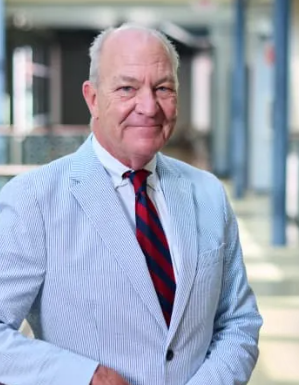
555 Washington Ave,
Ste 600A,
St. Louis, MO 63101
Phone: (618) 278-5186
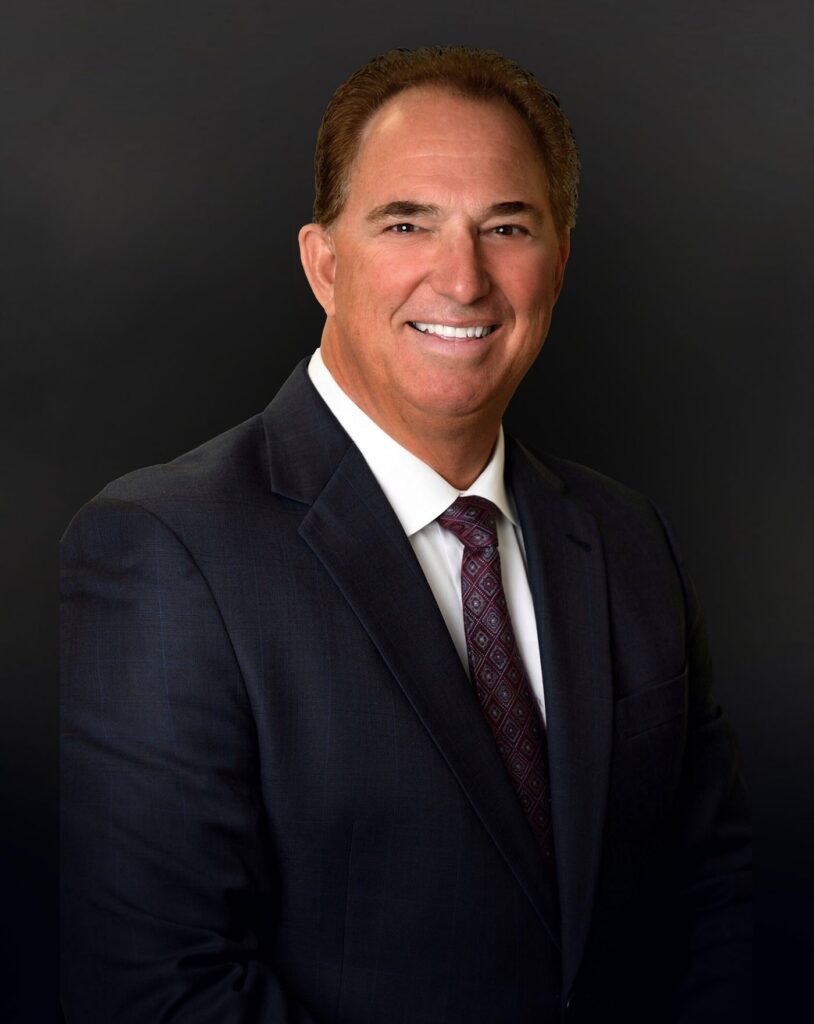
2780 Middle Country Rd
Suite #312
Lake Grove, NY 11755
Phone: (631) 460-5488

445 S. Figueroa Street,
Suite 3100
Los Angeles, CA 90071
Phone: (213) 376-0099
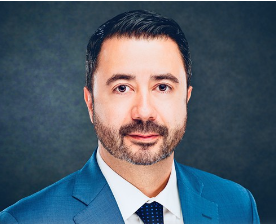
2500 E T C Jester Blvd
Suite 525,
Houston, TX 77008
Phone: (866) 264-9508

4900 Daggett Ave.,
St. Louis, MO 63110
Phone: 888-803-1307

4900 Daggett Ave.,
St. Louis, MO 63110
Phone: 888-803-2581

509 Evans St.,
Greenville, NC 27858
Phone: (252) 397-8691
For similar articles click here: https://ftyuh.com/hit-and-run-attorney/
